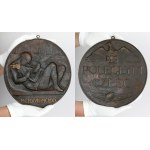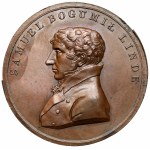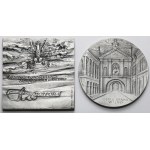A beautiful and little-known piece of communist minting history preserved in the form of two medallions.
These two author's models are the only reminder of what the first two-zloty coin of the communist period might have looked like. A coin that, by the decision of the authorities, was never minted, even in the form of a proof. And while the obverse designed by the famous sculptor Kazimierz Zieliński (1923-2010) found its way into circulation a few years later (including on 10-zloty coins with Tadeusz Kosciuszko), the design of the reverse is unprecedented. A prominent Polish sculptor and medalist - Józef Gosławski (1908-1963) - was responsible for it. He was the author of the icons of communist minting - the five-zloty coin with the Fisherman or the hundred-zloty coin with Mieszko and Dabrowka.
He was the design prepared for the November 1957 National Bank of Poland competition for 2, 5 and 10-zloty coins. In its first stage, a number of artists of the time submitted plaster designs. This form made it easy to apply corrections, technical improvements. Only from these did the State Mint select a group, which it realized in the form of casts in bronze, used, among other things, in reduction machines (of which we had an example at our 8th auction).
During the competition for the 2 zloty denomination, two works by Goslawski were appreciated. They were the reverse with cockerels, which was surpassed only by Wojciech Jastrzebski's well-known design with "berries," and the one with a moose, which received an honorable mention. However, their realization was to be halted by political-ideological considerations. The moose was not minted most likely because of the background with stylized images of crowned Polish eagles (smuggled in as an ornament). Roosters, on the other hand, were to be among the forbidden animals, and these instructions were to come from the ideological department of the Central Committee of the Polish United Workers' Party itself.



















